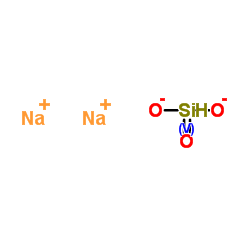Efficacy of chemical interventions against Escherichia coli O157:H7 and multidrug-resistant and antibiotic-susceptible Salmonella on inoculated beef trimmings.
Ifigenia Geornaras, Hua Yang, Galatios Moschonas, Matthew C Nunnelly, Keith E Belk, Kendra K Nightingale, Dale R Woerner, Gary C Smith, John N Sofos
Index: J. Food Prot. 75(11) , 1960-7, (2012)
Full Text: HTML
Abstract
Studies were conducted to compare the decontamination efficacy of six chemical treatments against Escherichia coli O157:H7 and multidrug-resistant and antibiotic-susceptible Salmonella inoculated on beef trimmings. The inocula, comprising four-strain mixtures of rifampin-resistant E. coli O157:H7 and antibiotic-susceptible or multidrug-resistant (MDR and/or MDR-AmpC) Salmonella Newport and Salmonella Typhimurium, were inoculated (3 log CFU/cm(2)) separately onto samples (10 by 5 by 1 cm) derived from beef chuck rolls. Samples were left untreated (control), were immersed for 30 s in acidified sodium chlorite (0.1%, pH 2.5), peroxyacetic acid (0.02%, pH 3.8), sodium metasilicate (4%, pH 12.6), Bromitize Plus (0.0225% active bromine, pH 6.6), or AFTEC 3000 (pH 1.2), or were immersed for 5 s in SYNTRx 3300 (pH 1.0). Levels of surviving Salmonella on treated trimmings were not influenced by serotype or antibiotic resistance phenotype and were generally similar (P ≥ 0.05) or lower (P < 0.05) than levels of surviving E. coli O157:H7 regardless of antimicrobial treatment. Overall, depending on chemical treatment (reductions within each chemical treatment were similar among all tested inocula), initial counts of E. coli O157:H7 (2.7 to 3.1 log CFU/cm(2)) were reduced (P < 0.05) by 0.2 to 1.4 log CFU/cm(2). Similarly, initial counts of the tested Salmonella inocula (2.8 to 3.3 log CFU/cm(2)) were reduced (P < 0.05) by 0.4 to 1.4 (Salmonella Newport, antibiotic susceptible), 0.3 to 1.4 (Salmonella Newport, MDR-AmpC), 0.2 to 1.5 (Salmonella Typhimurium, antibiotic susceptible), 0.4 to 1.3 (Salmonella Typhimurium, MDR), and 0.4 to 1.5 (Salmonella Typhimurium, MDR-AmpC) log CFU/cm(2), depending on antimicrobial treatment. Reductions obtained with sodium metasilicate were 1.3 to 1.5 log CFU/cm(2), regardless of inoculum, and reductions obtained with the five remaining antimicrobial treatments were 0.2 to 0.7 log CFU/cm(2) (depending on treatment). Findings of this study should be useful to regulatory authorities and the meat industry as they consider Salmonella contamination on beef trimmings.
Related Compounds
| Structure | Name/CAS No. | Molecular Formula | Articles |
|---|---|---|---|
 |
Sodium metasilicate
CAS:6834-92-0 |
Na2O3Si |
|
Reactive airways dysfunction syndrome from acute inhalation ...
2012-01-01 [Can. Respir. J. 19(3) , e25-8, (2012)] |
|
Hair highlights and severe acute irritant dermatitis ("burn"...
2010-12-01 [Cutan. Ocul. Toxicol. 29(4) , 229-33, (2010)] |
|
Synthesis and Structure of NaZnSiO(3)OH, a New Chiral Zincos...
2001-01-01 [Inorg. Chem. 38 , 455, (1999)] |
|
Management of root knot nematode, Meloidogyne incognita in c...
2010-01-01 [Commun. Agric. Appl. Biol. Sci. 75 , 497-505, (2010)] |
|
Comparison of decontamination efficacy of antimicrobial trea...
2012-09-01 [J. Food Sci. 77(9) , M539-44, (2012)] |